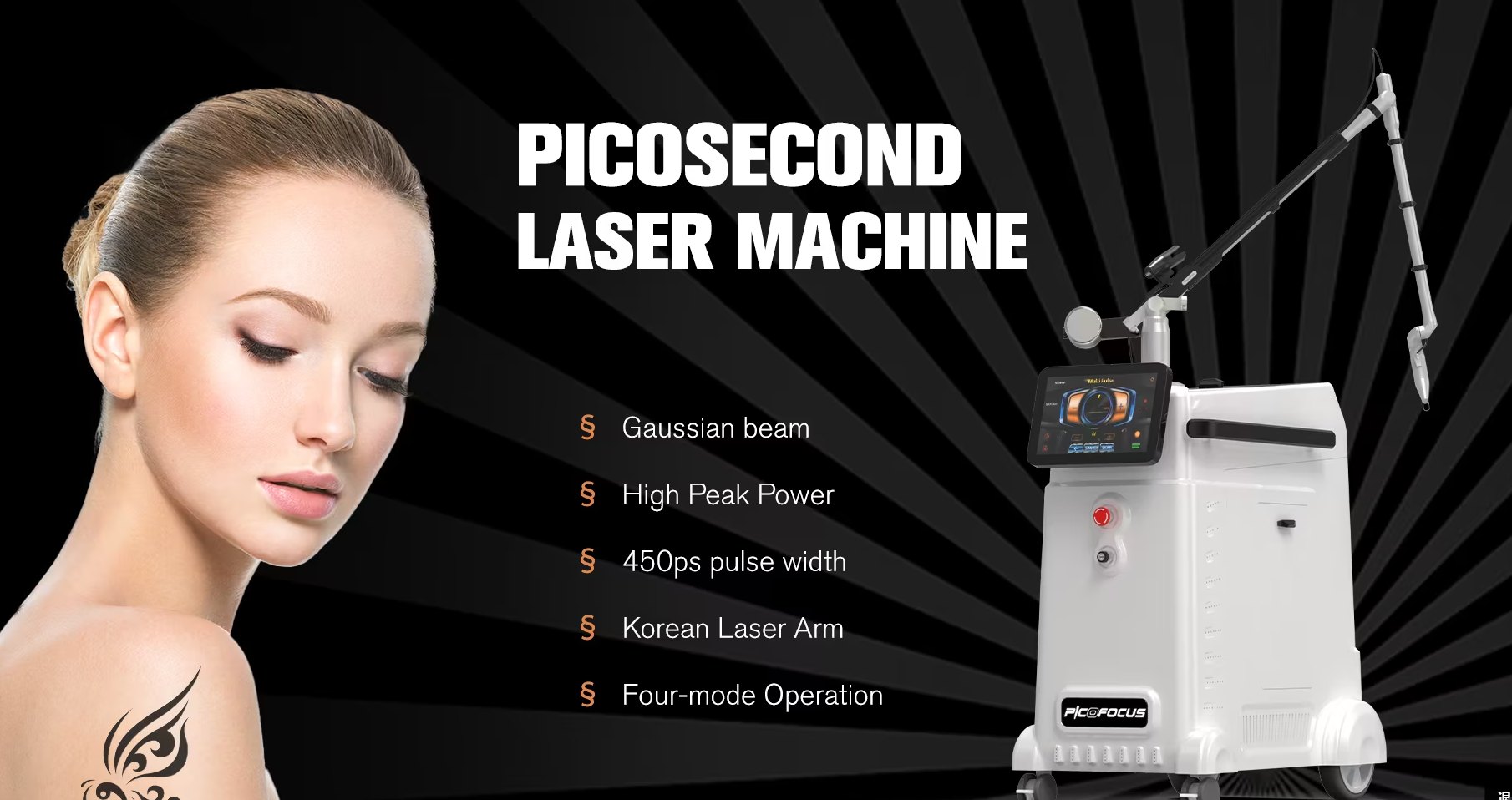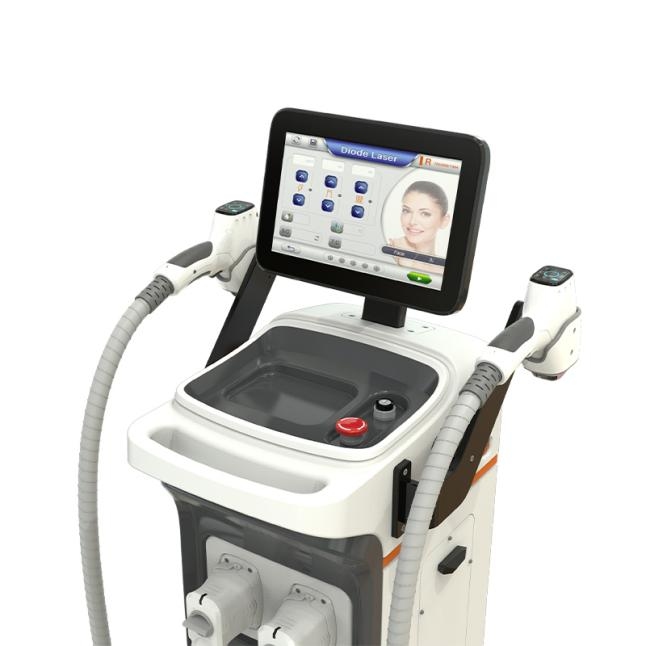Picosecond lasers have gained significant attention in the field of dermatology and aesthetics due to their advanced technology and versatile applications. Understanding how they function and the optimal frequency of treatment can lead to more successful outcomes in skin rejuvenation, tattoo removal, and other cosmetic procedures. This article delves into the intricacies of picosecond laser technology and highlights the contributions of Nubway, a leader in the laser industry.
An Overview of Picosecond Laser Technology
Picosecond laser technology represents a significant advancement over traditional laser systems, which typically operate on nanosecond timeframes. The hallmark of picosecond lasers is their ability to deliver energy in ultra-short pulses, measured in trillionths of a second. This rapid pulse delivery minimizes the thermal effect on surrounding tissues while maximizing the treatment’s efficacy. The precision of these lasers allows for targeted treatment of various skin issues, including pigmentation, acne scars, and fine lines, without the prolonged downtime often associated with traditional laser treatments.
The unique operating frequency of picosecond lasers enables them to break down pigment particles more effectively while also stimulating the body’s natural collagen and elastin production. As a result, patients experiencing treatment report visible improvements in skin texture and tone, along with reduced signs of aging.
The Science Behind Picosecond Lasers
The mechanism of action behind picosecond lasers involves a phenomenon known as “selective photothermolysis.” This process utilizes controlled pulse duration to impact target chromophores—structures in the skin that absorb laser energy without causing damage to surrounding cells. The ultra-short pulse duration creates an almost instantaneous thermal impact, which leads to a rapid contraction of the targeted area, inducing a phenomenon called “photoacoustic effect.”
This effect results in the fragmentation of pigment and tattoo inks into smaller particles that can be effectively cleared away by the body’s immune system. Significant studies have shown that compared to longer pulse lasers, picosecond lasers can achieve results with fewer sessions and less risk of scarring.
Unique Features and Advantages
Picosecond lasers offer various features that elevate them above traditional laser systems. For instance, the combination of high peak power and precise energy delivery allows for various customizable settings to accommodate different skin types and concerns. Treatments can be adjusted for depth and intensity, ensuring optimal results with minimal discomfort.
Another advantage of picosecond lasers is their speed of operation. They tend to have shorter treatment sessions compared to older technologies, enhancing patient convenience. Additionally, many state-of-the-art picosecond laser systems include built-in cooling mechanisms to ensure patient comfort throughout the procedure.
Nubway: Innovators in Laser Technology
Nubway has emerged as a key player in the development of advanced laser technology, emphasizing the innovation associated with picosecond lasers. The company focuses on integrating state-of-the-art technology into their products, ensuring effectiveness and safety.
Company Milestones and Achievements
Since its establishment, Nubway has been committed to redefining the standards of beauty and aesthetics by researching numerous laser technologies, and has launched a range of laser treatment products such as Diode Laser Machine and Fractional Co2 Laser Machine. They continue to reshape the landscape of laser therapy with advanced methods of research and development.
Commitment to Quality and Innovation
Quality and innovation stand as the pillars of Nubway’s philosophy. Their latest picosecond laser systems are designed using the highest-grade materials and follow stringent manufacturing processes. This commitment ensures that their products are not only powerful in terms of performance but also user-friendly and safe.
In addition, Nubway is also deeply involved in other fields of cosmetic medicine, such as providing 5D HIFU Machine for safe and non-invasive skin treatment. Nubway will continue to learn and improve to face the new trends and research achievements in cosmetic medicine,
The frequency at which patients can safely undergo picosecond laser treatments typically ranges from 4 to 6 weeks, depending on individual skin conditions and treatment goals. Practitioners may suggest adjusting treatment intervals based on the response observed in patients during the recovery process.
Overall, by integrating innovative practices with a deep understanding of picosecond laser technology, Nubway continues to lead the way in offering effective laser solutions aimed at enhancing patient satisfaction and treatment outcomes.
Determining the Optimal Frequency for Picosecond Laser Treatments
Factors Influencing Treatment Frequency
Skin Type and Condition
The frequency of picosecond laser treatments is influenced by the individual’s skin type and specific skin conditions. For instance, patients with more sensitive skin may require longer intervals between treatments to allow the skin to recover adequately and reduce adverse reactions. Conversely, individuals with more resilient skin types, who do not exhibit significant sensitivity or adverse effects, may tolerate more frequent sessions. Moreover, specific conditions such as acne scars may necessitate tailored treatment schedules to optimize healing and results.
Desired Results
The desired outcomes of picosecond laser treatments play a significant role in determining how often a patient can undergo these procedures. For example, someone seeking intensive rejuvenation or significant pigmentation reduction may benefit from more frequent treatments, while those looking for maintenance or mild improvement may prefer a spaced-out schedule. The specific results targeted can guide practitioners in structuring a customized plan that enables the patient to achieve their aesthetic goals effectively while minimizing risks.
Treatment Area and Size
The size and location of the area being treated can also dictate the recommended frequency for picosecond laser procedures. Smaller areas may be treated more quickly and frequently compared to larger expanses of skin that require more downtime. Additionally, facial areas that have higher cellular turnover could potentially handle more frequent applications of the laser compared to other regions. An understanding of the area being addressed aids in tailoring the treatment regimen to suit each patient’s unique needs.
Typical Treatment Intervals
Standard Recommendations
Standard recommendations suggest that patients can typically undergo picosecond laser treatments every 4 to 6 weeks. This interval allows for adequate skin recovery and regeneration of tissues, enabling the maximum effectiveness of the subsequent treatment session. Practitioners often stress the importance of waiting until the skin has fully healed to avoid accumulating side effects and to enhance the potential for optimal results.
Customizing Frequencies Based on Individual Needs
Customization of treatment frequencies is crucial in creating effective treatment plans. Practitioners assess individual responses to initial treatments—monitoring healing times, results achieved, and any side effects experienced—and adjust future sessions accordingly. Some patients may benefit from an accelerated treatment pace, while others might need extended intervals to address specific reactions or skin adjustments prompted by the previous treatments. This adaptive approach plays a significant role in maximizing treatment outcomes.
Benefits of Appropriate Picosecond Laser Frequency
Enhanced Treatment Efficacy
One of the primary benefits of adhering to an appropriate frequency for picosecond laser treatments is the enhancement of treatment efficacy. Proper timing allows for the cumulative effects of each session to take place without overwhelming the skin. Consequently, patients experience improved results in terms of pigmentation reduction, texture enhancements, and overall skin health, ultimately leading to higher satisfaction with the treatment process.
Reduced Risk of Side Effects
Another benefit of maintaining an appropriate treatment frequency is the minimized risk of side effects. Over-treatment or insufficient recovery time can lead to complications such as prolonged redness, swelling, or even scarring. Adhering to established intervals allows the skin to recuperate, thereby reducing the likelihood of adverse reactions. With controlled treatment frequency, practitioners can help ensure the safety and well-being of their clients throughout the process.
Improved Patient Satisfaction
Ultimately, optimizing the treatment frequency directly correlates with improved patient satisfaction. When treatments are scheduled judiciously, patients are more likely to perceive visible results without the discomfort of excessive downtime or unwanted side effects. As patients are pleased with their outcomes and the overall experience, they are more inclined to return for maintenance sessions, fostering a longer-term relationship between clients and practitioners. With Nubway’s cutting-edge picosecond laser systems, practitioners can confidently provide tailored treatment plans that prioritize patient satisfaction and success in aesthetic outcomes.
Professional Recommendations for Using Picosecond Lasers
Pre-Treatment Guidelines
Before undergoing a picosecond laser treatment, it is essential for practitioners to conduct a thorough consultation with the patient. This should include assessments of the patient’s medical history, skin type, and any specific concerns they may have. Recommendations may involve avoiding sun exposure and discontinuing the use of certain skincare products containing retinoids or acids that can increase skin sensitivity. Adequate hydration and moisturizing the skin prior to treatment can also enhance the effectiveness of the laser by preparing the tissues for optimal energy absorption.
Furthermore, practitioners should educate patients about what to expect during the procedure. Understanding that picosecond lasers operate with rapid pulse technology often alleviates patient anxiety, as they’re aware these systems minimize discomfort and downtime. Discussing the expectation of minor erythema or swelling following treatment is also important, allowing the patient to prepare mentally and physically for post-treatment care.
Post-Treatment Care
Post-treatment care plays a critical role in the overall success of picosecond laser procedures. Patients should be advised to avoid sun exposure and wear broad-spectrum sunscreen daily to protect the treated area. Additionally, they should refrain from strenuous physical activities or heat exposure, such as saunas, that could increase inflammation in the skin for a specified period, typically around 48 hours.
Hydration remains vital following treatment. Patients are encouraged to use gentle cleansers and fragrance-free moisturizers to support healing. Practitioners should also provide guidelines on when to resume the use of any prescription topicals or specific skincare products, as premature reintroduction may lead to irritation or complications.
Practitioners must highlight the importance of regular follow-ups to assess healing and confirm treatment efficacy. This ongoing communication allows for adjustments to future treatments based on individual recovery rates and skin responses.
Advancements in Picosecond Laser Technology
Latest Innovations by Nubway
Nubway has been at the forefront of innovations within the picosecond laser technology landscape. Their advanced devices leverage multiple wavelengths, allowing for a broad spectrum of treatments aimed at different skin conditions such as pigmentation, acne scars, and general skin rejuvenation. Additionally, the latest systems are equipped with sophisticated cooling mechanisms that not only enhance patient comfort but also protect the skin during treatment.
Nubway’s picosecond laser products are integrated with user-friendly interfaces that allow practitioners to customize treatment parameters effortlessly. This adaptability not only enhances treatment precision but also streamlines the workflow in a clinical setting. Another noteworthy feature is the 20Hz ultra-fast frequency capability, which significantly reduces procedure times, providing satisfactory patient experiences without compromising on efficacy.
Moreover, Nubway’s commitment to continuous improvement ensures that their products adhere to the highest safety standards. By integrating FDA-approved technologies and seeking relevant certifications, the company reaffirms its focus on delivering advanced, reliable solutions for practitioners in the field.
Future Directions in Picosecond Lasers
Looking ahead, advancements in picosecond laser technology are set to parallel the evolution of patient demands in aesthetic treatments. The trend towards increased personalization means practitioners will increasingly require systems that provide not only enhanced treatment efficiency but also bespoke treatment plans tailored to individual patient needs.
There is a growing emphasis on combining picosecond lasers with complementary modalities, such as microneedling or radiofrequency devices. This combination is expected to yield synergistic effects, resulting in more comprehensive skin rejuvenation approaches that address multiple concerns simultaneously.
Additionally, research into the bio-stimulatory effects of picosecond lasers continues to fuel interest in their applications beyond traditional aesthetic treatments. With ongoing clinical studies, there is potential for these lasers to be embraced within therapeutic settings, addressing issues such as scar tissue management or triggering wound healing processes.
As Nubway remains committed to innovation, practitioners can anticipate the release of cutting-edge products that not only enhance treatment outcomes but also prioritize patient safety and comfort. The future of picosecond lasers signals exciting opportunities for both practitioners and patients alike, ensuring that the therapeutic landscape continues to evolve in alignment with advancements in technology and patient care.







